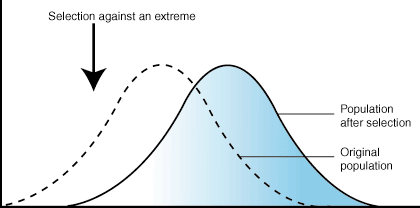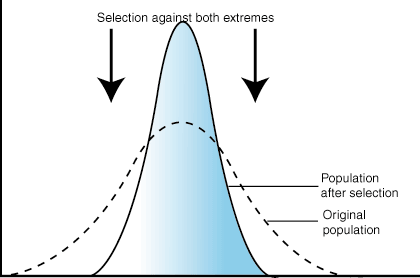Selection & Adaptations
1/3
Earn XP
Description and Tags
Name | Mastery | Learn | Test | Matching | Spaced |
|---|
No study sessions yet.
4 Terms
Natural selection
A mutation leads to an alteration in an allele, in turn leading to a beneficial characteristic.
Those individuals with the beneficial allele are more likely to survive long enough to reproduce
The beneficial allele is passed on to the next generation.
This generation have a greater proportion of the beneficial allele in the population.
More individuals in this generation are likely to survive, reproduce, and pass on the allele.
This leads to the frequency of the beneficial alleles increasing from generation to the next generation.
Over generations, this leads to evolution as advantages become common in the population.
Directional selection
Directional selections is where individuals with alleles for characteristics of an ‘extreme’ type are more likely to survive and reproduce. Caused by environmental change
e.g. Peppered moths

Stabilising selection
Stabilising selection is where individuals with alleles for characteristics towards the middle of the range are more likely to survive and reproduce. This occurs when the environment is not changing, reducing the range of possible characteristics
e.g. Body of mass of babies at birth

Adaptations
Natural selection results are in species that are better adapted to the environment that they live in. These can be:
Anatomical - Structural features which increase an organisms chance of survival and reproduction. e.g. being camouflage
Physiological - processes inside an organisms body that increase its chances of survival and reproduction. e.g. temperature regulation, releasing poison
Behavioural - acts which an organism does to increase its chances of survival and reproduction. e.g. migrating